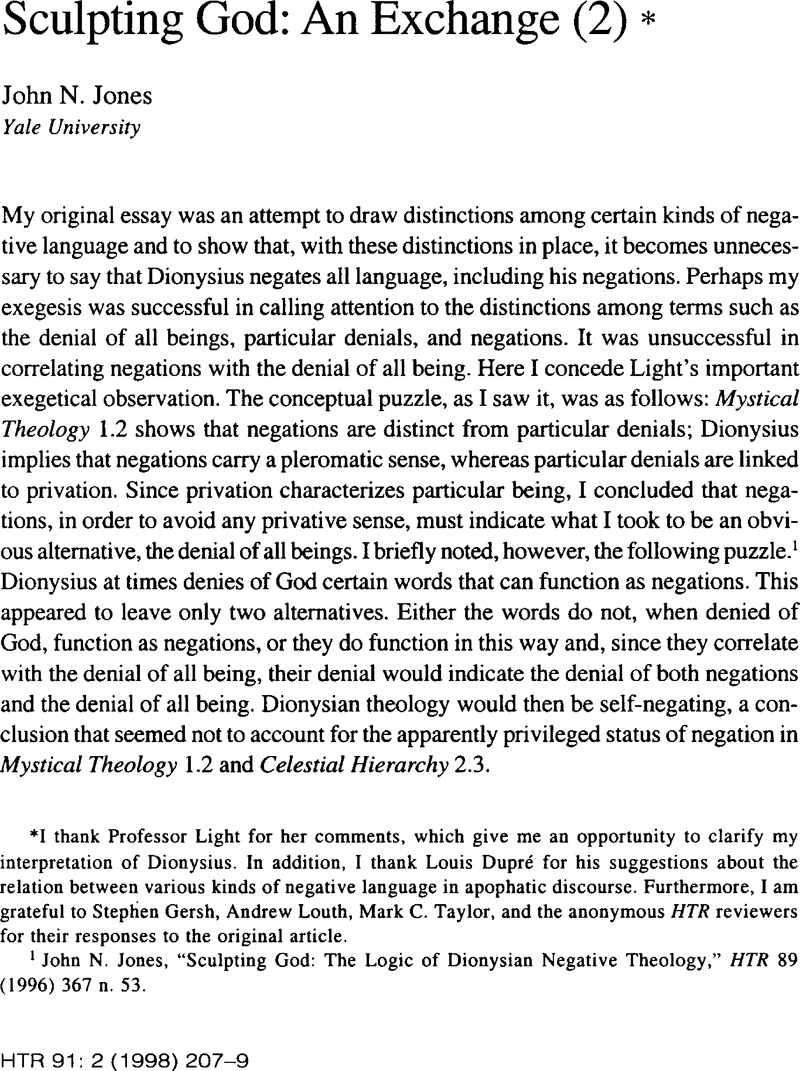No CrossRef data available.
Article contents
Sculpting God: An Exchange (2)*
Published online by Cambridge University Press: 10 June 2011
Abstract

- Type
- Notes and Observations
- Information
- Copyright
- Copyright © President and Fellows of Harvard College 1998
References
1 Jones, John N., “Sculpting God: The Logic of Dionysian Negative Theology,” HTR 89 (1996) 367 n. 53.Google Scholar
2 As I mentioned in “Sculpting God” (366, n. 44), for Dionysius, one cannot “know” (in the usual sense of the term) what transcends being or does not exist. As I failed to indicate, however, the converse does not hold true; as the case of angels shows, not all beings can be known.
3 , Pseudo-Dionysius, The Divine Names 1.5, 593c.Google Scholar
4 Salvatore R. C. Lilla discusses the various uses of one example of negation–“infinitude”–in “The Notion of Infinitude in Ps.-Dionysius Areopagita,” JTS 31 (1980) 93–103Google Scholar.
5 This calls our attention to the importance of epistemological concerns in Christian Neoplatonist thought. See Gersh, Stephen, From Iamblichus to Eriugena: An Investigation of the Prehistory and Evolution of the Pseudo-Dionysian Tradition (Leiden: Brill, 1978), esp. pp. 261–82Google Scholar.
6 , Jones, “Sculpting God,” 356.Google Scholar


